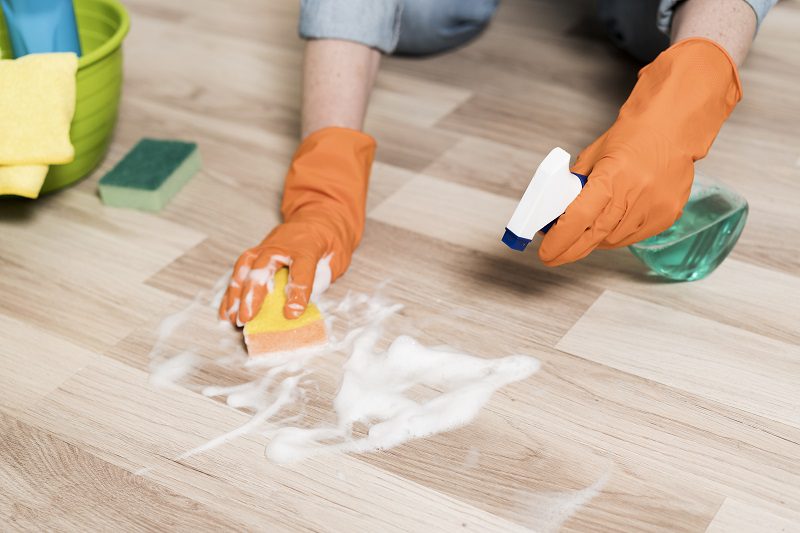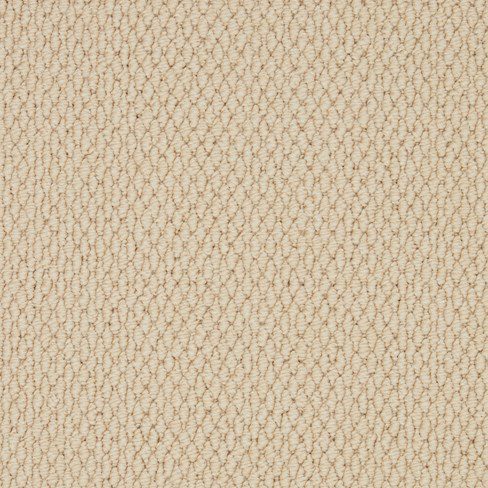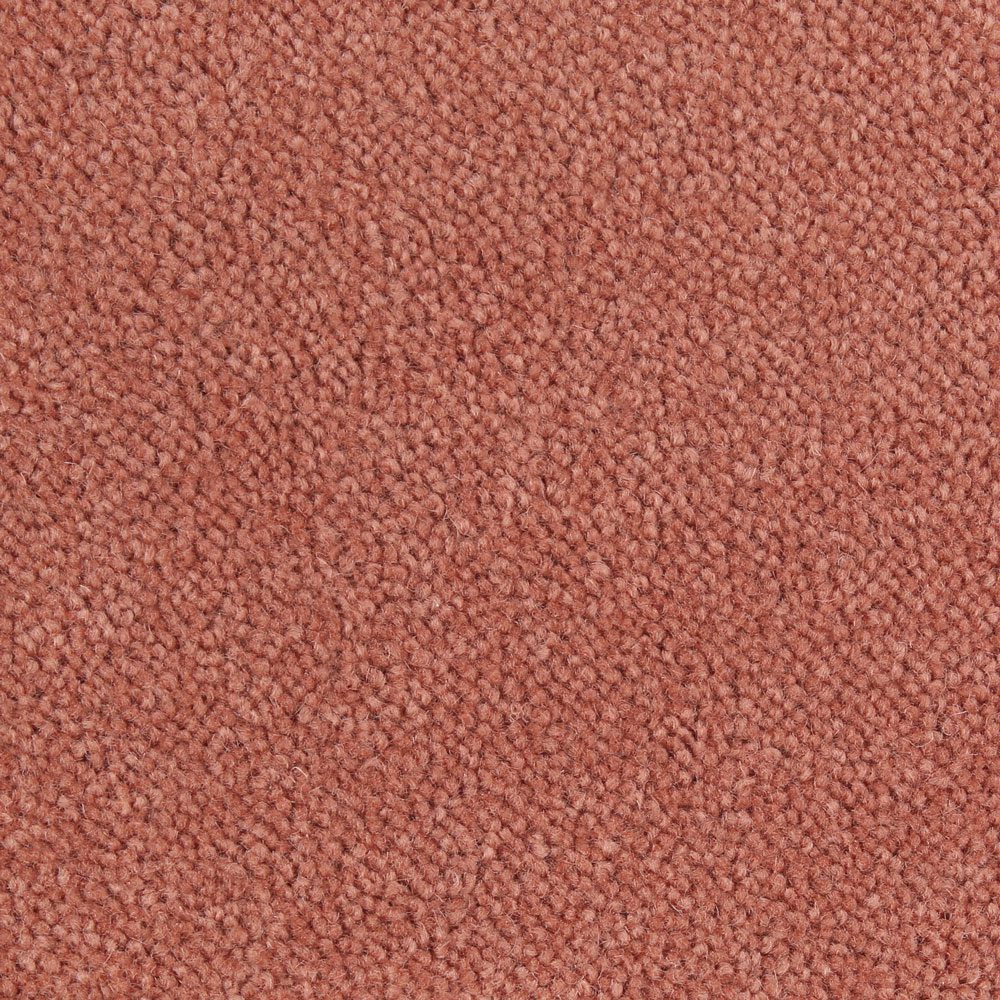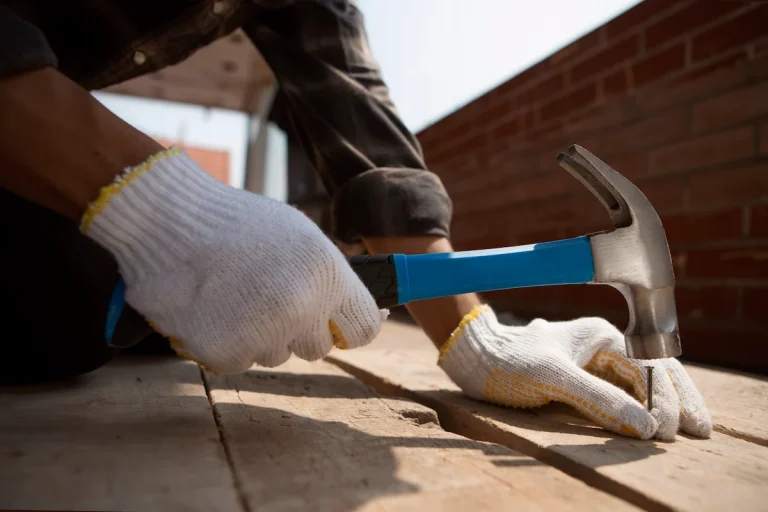Are you tired of dirty and grimy tile floors? A floor cleaner for tiles may be the solution you need. In this article, we will discuss the benefits of using a floor cleaner for tiles, the different types of suitable floor cleaners, how to choose the right floor cleaning solution for tile, and safety precautions when using them.
We will also provide tips on how to make homemade floor cleaner for tiles using natural ingredients. Say goodbye to dirty tile floors and hello to a sparkling clean home!
Key Takeaways:
Choose the right cleaner: Consider the type of tile, check ingredients, and read reviews for a suitable floor cleaner. Follow proper usage: Prepare the area, mix the solution, apply, scrub and rinse the tile to effectively clean and maintain its shine. Safety first: Wear protective gear, ensure proper ventilation, and follow instructions and warnings when using any floor cleaner for tiles.
What Is a Floor Cleaner for Tiles?
A floor cleaner for tiles is a specially formulated product designed to effectively clean and maintain the cleanliness of tile surfaces, removing dirt, grime and stains while preserving the integrity of the tiles.
These cleaners are essential for not only enhancing the appearance of your tiles but also for prolonging their lifespan. The specialised solutions are gentle yet powerful, ensuring that the tiles stay in top-notch condition without causing any damage. They effectively lift away stubborn residues, restoring the original lustre and shine of the tiles.
Regular use of tile floor cleaners ensures that your floors remain hygienic and free from germs, creating a healthy environment for your household. It’s crucial to maintain the cleanliness of tiled surfaces, especially in areas prone to moisture and foot traffic, to prevent the build-up of mould and mildew. With the right and good floor cleaner for tile, you can effortlessly keep your tiles looking spotless and appealing.
Why Use a Floor Cleaner for Tiles?
Utilising a floor cleaner specifically formulated for tile offers numerous benefits, including effective stain removal, preservation of tile integrity, and the assurance of a clean, residue-free surface that enhances the aesthetic appeal of the tiled area.
Using a specialised floor cleaner not only efficiently removes stubborn stains that can accumulate on tile surfaces but also helps safeguard the structural integrity of the tiles by preserving their natural properties and finishes. This ensures that the tiles retain their original lustre and appearance for extended periods.
A high-quality floor cleaner leaves behind a residue-free surface, preventing any build-up that can dull the sheen and attractiveness of the tiles. This is particularly crucial for maintaining the overall cleanliness and freshness of the tiled area.
The Advantages of Using a Floor Cleaner for Tiles?
Using a floor cleaner for tiles offers a myriad of benefits, including effective stain removal, preservation of tile integrity, and the assurance of a clean, residue-free surface that enhances the aesthetic appeal of the tiled area.
Effective floor cleaners for tiles work diligently to target and remove stubborn stains, such as grime, grease, and spills, ensuring that the tiled surface maintains its pristine appearance. The gentle yet powerful formulas not only eliminate stains but also contribute to the long-term preservation of the tile’s integrity, preventing unwanted damage or discolouration.
These cleaning solutions don’t just remove stains but also leave behind a polished, residue-free surface, dramatically enhancing the overall appearance of the tiled area. This results in a clean and inviting space, creating a positive impression on anyone who walks in.
Types of Floor Cleaners Are Suitable for Tile
Various types of floor cleaners are suitable for tiles, including natural floor cleaners and chemical floor cleaners, each offering distinct cleaning properties and advantages for different tile surfaces.
Regarding natural floor cleaners for tiles, they are often made from biodegradable ingredients and are environmentally friendly. They are ideal for households with children or pets, as they typically do not contain harsh chemicals that could pose potential health risks.
Natural floor cleaners often have gentle formulas that are suitable for a variety of tile finishes, including porcelain, ceramic, and stone tiles.
On the other hand, chemical floor cleaners are known for their powerful cleaning agents that can effectively remove tough stains, grease, and grime from tile surfaces. They are particularly useful for high-traffic areas in commercial spaces or heavily soiled tile floors.
Chemical floor cleaners are available in various formulations, such as acidic cleaners, alkaline cleaners, and neutral cleaners, each suited for specific types of tiles and levels of soil accumulation.
a. Natural Floor Cleaners
Natural floor cleaners for tiles, such as vinegar and water solutions, baking soda pastes, and lemon juice solutions, offer eco-friendly and non-toxic alternatives for effectively cleaning and maintaining tile surfaces whilst minimising environmental impact.
These natural ingredients are not only gentle on the environment, but they also provide a safe and healthy option for keeping your living spaces clean. Vinegar and water solutions, for example, are excellent at cutting through grease and grime, making them suitable for removing stains and tackling tough dirt on tile floors. The mild acidic nature of vinegar also helps to disinfect the surfaces, making it a versatile and cost-effective cleaning solution.
Baking soda, another staple of natural floor cleaning solutions for tile, not only acts as a gentle abrasive for scrubbing away stains but also helps to neutralise odours, leaving your floors fresh and clean. It is a powerful deodoriser and can effectively absorb unwanted smells, making it an ideal choice for households with pets or young children.
Lemon juice, with its natural antibacterial properties and pleasant citrus scent, is a fantastic option for brightening and refreshing tile surfaces. Its acidity makes it effective in cutting through soap scum and mineral deposits, whilst leaving behind a clean, streak-free finish.
b. Chemical Floor Cleaners
Chemical floor cleaners, formulated with specialised cleaning agents and solutions, provide powerful and targeted cleaning capabilities for tile surfaces, effectively removing tough stains and grime while ensuring optimal cleanliness and hygiene.
These cleaners are specifically designed to penetrate deep into tile surfaces and effectively dislodge and lift stubborn dirt, grease, and grime. This includes various types of stains such as food spills, oil residues, and soap scum, restoring the tile’s original lustre.
Not only do these cleaners tackle tough stains, but they also help maintain the sanitary conditions of tiled areas by eliminating bacteria, mould, and mildew. This promotes a healthier indoor environment and prevents potential health hazards caused by unclean tile surfaces.
With their convenience and ease of use, chemical floor cleaners are an essential tool for maintaining cleanliness and hygiene in both residential and commercial spaces.
How to Choose the Right Floor Cleaner for Tiles
Selecting the best floor cleaner for tiles involves considering factors such as the type of tile, checking the ingredients for compatibility, and researching reviews and recommendations to ensure an optimal cleaning solution for specific tile surfaces.
Regarding selecting the right floor cleaner for tiles, it’s important to first identify the type of tile you have. Some cleaners are specifically formulated for certain types of tile, such as ceramic, porcelain, or natural stone.
Considering the compatibility of ingredients is crucial; for example, acidic cleaners may not be suitable for certain types of tiles. Researching reviews and seeking recommendations from professionals or trustworthy sources can provide valuable insights into the performance and effectiveness of different floor cleaners.
By taking these factors into account, you can make an informed decision and choose the best tile floor cleaner that doesn’t leave residue and safely cleans your specific tile surfaces.
a. Consider the Type of Tile
The type of tile plays a crucial role in selecting the appropriate floor cleaner, as different tile materials and finishes may have varying cleaning requirements and compatibility with specific cleaning solutions.
For instance, porcelain tiles are highly durable and impervious to moisture, making them suitable for areas with high foot traffic and potential water exposure, such as bathrooms and kitchens. Their smooth and non-porous surface necessitates a gentle, non-abrasive cleaner to avoid damaging the finish.
On the other hand, natural stone tiles, such as marble or travertine, require pH-neutral cleaners to prevent etching or discolouration caused by acidic or alkaline substances.
Ceramic tiles, known for their versatility and affordability, are relatively easy to clean, but the grout lines between tiles can accumulate dirt and require specialised attention. Additionally, unglazed ceramic tiles demand more intense cleaning methods due to their porous nature.
Understanding these distinctions is paramount in ensuring the longevity and aesthetics of tiled surfaces, as using the wrong cleaner can lead to irreversible damage.
b. Verify the Ingredients
Thoroughly examining the ingredients of a floor cleaner is essential to ensure compatibility with the tile surface. Certain chemicals or components may adversely affect specific tile materials and finishes.
For instance, acidic compounds like vinegar or lemon may cause etching on natural stone tiles, whilst ammonia-based cleaners can discolour or dull the grout lines.
On the other hand, abrasive ingredients such as harsh abrasives and strong alkaline solutions can damage the surface of the tiles. This is especially true for tiles with a glazed finish.
Therefore, it’s crucial to be mindful of the ingredients in the floor cleaner to preserve the integrity and aesthetics of the tile surfaces.
c. Read Reviews and Recommendations
Utilising reviews and recommendations from trusted sources can provide valuable insights into the effectiveness and suitability of floor cleaners for tiles, aiding in the selection of high-quality and reliable cleaning solutions.
When considering floor cleaning products for tiles, it’s essential to seek advice from those who have experience with different products. Reading reviews allows consumers to learn about the experiences of others, gaining knowledge about the performance, durability, and ease of use of various cleaning solutions.
Recommendations from trusted sources, such as professional cleaners or reputable home improvement experts, can offer valuable guidance in selecting a product that meets specific cleaning needs. By evaluating recommendations and user reviews, individuals can make informed decisions and choose a floor cleaner that delivers exceptional results.
How to Use a Floor Cleaner for Tiles
Effectively using a floor cleaner for tiles involves proper preparation of the area, appropriate mixing of the cleaner and water, application of the solution to the tile surface, and thorough scrubbing and rinsing using suitable cleaning equipment and techniques.
Before starting the cleaning process, it is essential to remove any loose debris and dirt from the tile surface using a hoover or a dry mop.
Then, create the cleaning solution by diluting the floor cleaner with the recommended amount of water, following the instructions provided by the manufacturer.
Once the solution is prepared, carefully apply it to the tile, covering small sections at a time to ensure even distribution.
After application, use a steam cleaner or an electric floor cleaner with appropriate cleaning rollers to scrub the tile surface thoroughly, paying extra attention to any stubborn stains or grime.
Rinse the tile with clean water and allow it to dry completely before walking on it again.
a. Prepare the Area
Thoroughly preparing the area before using a floor cleaner is essential, involving tasks such as clearing the space, removing obstacles, and ensuring adequate ventilation to facilitate the cleaning process effectively.
Clearing the area not only provides a clear pathway for the cleaning process but also helps in avoiding any potential accidents or spills during the cleaning. Removing obstacles, such as furniture or rugs, allows for better access to the entire surface for a more thorough and efficient cleaning.
Ensuring proper ventilation is crucial as it helps dissipate any fumes or odours from the cleaning solutions, creating a safer and more comfortable environment for the cleaning process. Adequate ventilation accelerates the drying process, ensuring that the floor is ready for use sooner.
These preparatory tasks significantly impact the effectiveness and efficiency of the floor cleaning process, resulting in a cleaner and more pristine floor surface.
b. Mix the Cleaner and Water
Carefully mixing the floor cleaner with water in the appropriate ratios is crucial to ensure an effective cleaning solution that can be safely applied to the tile surface without causing damage or residue build-up.
When the floor cleaner is not diluted properly, it can lead to streaks or spots on the tiles. An excessively concentrated solution may leave behind a sticky or soapy residue, making the surface appear dull or attracting more dirt.
On the other hand, if the cleaner is too diluted, it may lack the necessary strength to effectively remove dirt and grime. Getting the proportions right ensures that the cleaning process not only removes dirt but also maintains the appearance and longevity of the tile surface.
c. Apply the Solution to the Tile
Applying the prepared cleaning solution to the tile surface evenly and thoroughly is essential to ensure comprehensive coverage and effective interaction with the soiled areas, facilitating the cleaning process and stain removal.
When applying the cleaning solution, make sure to use a generous amount to cover the entire surface, ensuring no spots are missed.
It’s crucial to allow the solution to sit for a few minutes to effectively interact with the soiled areas, breaking down tough stains and grime. For stubborn stains, gently agitate the solution with a soft brush to enhance its penetration into the tile’s pores.
Remember that thorough coverage and proper interaction with the soiled areas pave the way for a more efficient cleaning process, resulting in a sparkling, stain-free tile surface.
Effective application of the cleaning solution plays a pivotal role in achieving the desired cleanliness and restoring the tiles’ natural lustre.
d. Clean and wash the tiles
Thoroughly scrubbing the tile surface with appropriate cleaning tools and rinsing it with clean water after the application of the cleaning solution is essential to remove dirt, grime, and residual cleaning agents, ensuring a clean and pristine tiled area.
When the cleaning solution is applied to the tile, it works to loosen the build-up of dirt and grime accumulated over time. This makes it crucial to follow up with thorough scrubbing to dislodge these particles.
A stiff-bristled brush or scrubbing pad can provide the necessary friction to effectively lift the dirt from the tile surface. After scrubbing, rinsing the area with clean water is vital.
Rinsing serves as a critical step to flush away the dislodged dirt, grime, and any remaining residues of the cleaning solution. This process ensures that no cleaning agents are left behind, which can attract more dirt in the future and compromise the appearance of the tile.
Achieving a pristine tiled area ultimately depends on the meticulousness of the scrubbing and rinsing process.
Safety Precautions When Using a Floor Cleaner for Tiles
Utilising a floor cleaner for tiles requires adherence to important safety precautions, such as wearing protective gear, maintaining proper ventilation in the cleaning area, and strictly following instructions and warnings to ensure safe and effective cleaning practices.
When using floor cleaners for tile, it is crucial to prioritise protective gear to shield the skin and eyes from harmful chemicals. This includes wearing gloves, eye protection, and a mask to prevent inhalation of fumes.
Adequate ventilation is essential to minimise exposure to chemical vapours, so open windows and use fans to improve air circulation in the cleaning area.
Moreover, strict compliance with cleaning product instructions and warnings is vital to avoid accidents and achieve optimal results. This includes diluting the cleaner as directed, avoiding mixing with other chemicals, and using the product in the recommended manner. Neglecting these precautions can lead to safety hazards and ineffective cleaning outcomes.
a. Wear Protective Gear
Wearing appropriate protective gear, such as gloves, goggles, and masks, is essential when using floor cleaners for tile to safeguard against potential skin and respiratory irritation from cleaning agents.
Protective gear plays a crucial role in ensuring safety during the cleaning process.
Gloves act as a barrier, protecting the hands from direct contact with chemical cleansers, which can cause skin irritation or allergic reactions.
Meanwhile, goggles shield the eyes from splashes or fumes that may lead to irritation or damage.
Additionally, masks help prevent inhalation of hazardous particles or vapours, safeguarding the respiratory system.
By wearing this protective gear, individuals can prevent potential adverse health effects and work comfortably and safely while using floor cleaners for tile.
b. Keep the Area Well-Ventilated
Maintaining proper ventilation in the cleaning area by opening windows or using fans is crucial to dissipate fumes and odours from the cleaning process, minimising the risk of inhalation and ensuring a safe and comfortable environment.
When handling cleaning agents, adequate ventilation not only reduces the concentration of potentially harmful chemicals in the air but also lowers the chances of developing respiratory issues.
Windows can be opened to allow fresh air circulation, while using fans helps to create a flow of air, expelling pollutants and promoting a healthier atmosphere. With proper ventilation, the workspace becomes more pleasant, preventing the buildup of noxious odours and contributing to a more productive cleaning environment.
Taking these measures demonstrates a commitment to safety and welfare.
c. Follow Instructions and Warnings
Strictly adhering to the instructions and warnings provided by the floor cleaner manufacturer is vital to ensure the safe and effective utilisation of the cleaning product, mitigating the risk of accidents or adverse reactions during the cleaning process.
Ignoring the manufacturer’s guidance can lead to unintended consequences, such as damage to the floor surface, inadequate cleaning, or in worst cases, harmful chemical interactions posing a threat to the health of individuals or pets.
Compliance with the specified application methods and safety precautions is crucial to maintain a clean environment without compromising safety. It is advised to thoroughly read and comprehend the label directions and take necessary preventive measures for a smooth and risk-free cleaning experience.
How to Make a Homemade Floor Cleaner for Tiles
Creating a homemade floor cleaner for tiles can be achieved using simple and natural ingredients such as vinegar and water solutions, baking soda pastes, and lemon juice solutions, offering effective and eco-friendly alternatives for tile cleaning and maintenance.
These natural and eco-friendly ingredients not only effectively remove dirt, grime, and stains, but also contribute to a healthier indoor environment.
Vinegar is a powerful cleaning agent with antimicrobial properties, while water acts as a natural solvent. Blending them creates a gentle yet potent solution for tile floors.
Alternatively, bicarbonate of soda is highly versatile, renowned for its gentle abrasiveness that works wonders on tough stains without causing damage.
Furthermore, lemon juice offers a refreshing scent and natural acidity that helps to break down grease and grime, leaving your tile floors sparkling clean.
By combining these ingredients in different ratios, you can customise the cleaning solution to suit different types of tiles and levels of dirt and grime. This approach not only ensures clean and shiny floors but also nurtures a healthier, more sustainable cleaning routine for your home.
a. Vinegar and Water Solution
A simple homemade floor cleaner for tiles can be made using a mixture of vinegar and water. This offers a natural and cost-effective solution for effectively cleaning and maintaining tile surfaces without harsh chemicals or environmental impact.
Using a vinegar and water solution for tile cleaning not only helps in removing dirt and grime but also acts as a natural disinfectant. This makes it a versatile and eco-friendly option for maintaining a sparkling clean floor.
To create this solution, mix equal parts of water and vinegar in a bucket or spray bottle. Make sure to use white vinegar for the best cleaning results. Once the solution is ready, simply mop the floor or use it with a cloth. Witness the effective cleaning power of this homemade floor cleaner.
The acidic nature of vinegar helps in breaking down stubborn stains and grease, while its antimicrobial properties ensure a hygienic tile surface. Along with its cleaning prowess, this solution is cost-effective, making it a practical choice for regular tile maintenance.
Embracing the use of vinegar and water for cleaning tile establishes a reliable and environmentally friendly approach to keeping your floors gleaming and free from harmful chemical residues.
b. Baking Soda and Water Paste
Mixing bicarbonate soda with water to create a paste offers a versatile and non-toxic homemade floor cleaner for tiles, capable of effectively removing stains and grime while being gentle on the tile surface and the environment.
Bicarbonate of soda and water paste is a simple yet powerful cleaning solution that is suitable for various types of tile surfaces, including ceramic, porcelain, and natural stone.
Its mild abrasiveness helps to lift dirt, grease, and grime without causing any damage to the tile finish. This natural mixture possesses deodorising properties, making it an excellent choice for eliminating odours from the tile floors.
The combination of bicarbonate of soda and water acts as a natural disinfectant, killing common household germs and bacteria without leaving harmful chemical residues.
This makes it a safe option for households with children or pets, ensuring a clean and hygienic environment without compromising on safety.
c. Lemon Juice and Water Solution
Combining lemon juice with water provides a refreshing and natural homemade floor cleaner for tiles, harnessing the cleaning properties of citrus whilst offering a pleasant and eco-friendly solution for maintaining the cleanliness of tile surfaces.
When creating this simple yet effective cleaning solution, it’s important to use fresh lemon juice, as it contains natural acids that work wonders on stains and grime.
The acidity of the lemon helps to break down dirt and grease, whilst the water dilutes the solution, making it safe for use on various tile surfaces.
Along with its cleaning properties, the lemon juice solution leaves behind a fresh, citrus scent, elevating the overall appeal of the cleaned area. This natural aroma makes it a popular choice for those seeking a chemical-free cleaning alternative.
In addition to following the tips above, you can also simplify the cleaning of your home and its furnishings, including tile floors, by availing of TEKA Cleaning. Their professional cleaning ensures a more comfortable home environment.
Also choose tile materials that are durable and easy to clean from TEKA Flooring, such as wood vinyl tiles or industrial-hued tiles. TEKA Flooring offers an extensive array of exquisite tiles to cater to your discerning tastes. Simply consult with us to discover the epitome of flooring excellence.
Read also: Laminate Vs. Vinyl Flooring Comparison: Which One Is Better?

































